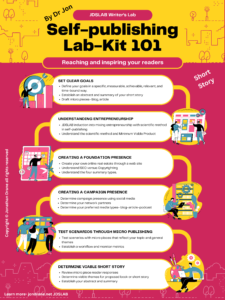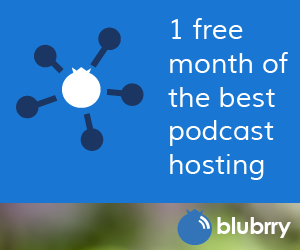Podcast: Play in new window | Download (Duration: 24:52 — 8.5MB) | Embed
Subscribe: Apple Podcasts | Spotify | Android | iHeartRadio | Blubrry | Email | RSS | More
The science of self-publishing. Writer communities do not always understand that self-publishing has a scientific dimension. Writers will often spend time on creative content generation in the manuscript stage but not be aware of how scientific methods can test your likely audience type and response.
This article and podcast takes you through the scientific method and how it relates to audience reach through scenario testing.
Self-publishing starts after the manuscript creation stage and involves both an entrepreneurial activity and a series of scenarios that are tested. The testing of scenarios is an act of scientific investigation.
However when we say ‘scenario’ it is about how the ‘book topic’ is tested in the market place prior to any significant investment.
It is a time to pause and use the wonderful creative content of the manuscript for marketing purposes before attempting to produce the book itself.
Congratulations, because when you pause to test your creative idea and mature them based on audience and market responses you have suddenly entered the scientific process. In fact you are a scientist.
The scientific process has two main concepts related to book production and self-publishing. They are
Creating a minimum viable product (MVP) through a micro piece.
Scenario testing of your book prior to production.
In the scientific and business world MVP involves the creation of virtual prototype products that are tested prior to the creation and full investment in the product which requires capital and investment.
Scenario testing involves the creation of versions of the MVP and testing it in the market place.
Lets have a look at each in the context of self-publishing.
Creating a minimum viable product (MVP)
In Dr Jon’s self-publishing laboratory JD SLAB, he mixes these two methodologies and uses micro pieces of writer’s work to test the likely commercial response by using scientific methods and the principle of minimum viable product or MVP.
As an analogy, before creating a new car model, a manufacturer might create a simulation of the car’s performance on the road in certain situations in a virtual environment.
Previously an actual mechanical prototype might have been made which involved considerable expense with a high risk and uncertain return. Thus the difference between traditional prototypes and the more recent MVP.
In the writing situation an MVP involves the creation of a micro-piece. A micro-piece is a small representation of a book.
As examples it might involve a social media post with a teaser blog article, a short story version of the book, a podcast introduction to the book concept or a brief teaser video (like in the movie previews).
You will note that different media types are considered from written to audio to audio-visual. This is because of the different access levels that are involved to the potential reader.
However self-publishing is an act of testing scenarios as if you were in a laboratory. A scenario involves creating one of a number of creative content versions.
Scenario Testing
Scenario testing involves the creation of a series of alternative versions to your micro-piece which you test in the market place using a simple media strategy.
The strategy is to test each version of the micro piece for audience response.
Lets look at an example.
Let’s say you have created an mvp micro piece in the form of an fb blog and a teaser article about your upcoming book on your web site. The article would have a summary of the book and a pitch to a particular audience.
It might be your great new idea for a book on house sitting. Which has a humorous slant because it is actually about pet sitting! The title might be:
How to house sit (or love other people’s pets)
A great title and you are ready to launch it in the world!
The missing link however is your likely audience response levels. Social media has immediate response with likes and comments so that is a good start, but how many people click through to read your blog article?
And of those people how many ask for more information or respond to a pop up or form you create on your article page to express interest?
And of those people how many will buy your book when it is available?
This layered response is all valuable ‘data’ about your likely success and is called a lead pipeline.
As you go forward you will find that the number of people who end up buying your book (the last point of the pipeline) requires a greater number of people at the first point of contact which is your social media post (in this example).
Some expert tips on leads by Dr Jon
Dr Jon notes:
Lead pipelines are a number’s game. To get your book sold to 100 people there is a rule of thumb that you will need to circulate your book to 100 times more people. In other words 10,000 people.
We call this the 10,000 rule. It may not always be that ratio but it is a good rule of thumb that shows how hard it is to find your reader on the internet.
To monitor this data you will need some basic google analytics set up on your web site and a basic SEO plugin.
Lets have a quick look at this as we cover this in our lab kit and byo webinars.
Learn more on jon drane dot net and go to podcasts and byo webinars.
SEO stands for Search Engine Optimisation. There are billions of searches occurring every day online and they relate to ‘focus key phrases’ that are sought by google searches.
An example is ‘how to house sit’.
You may have used your creative writing skills to write your article but they are missing the seo content necessary to attract readers who are searching for topics that relate to your article and book.
Getting your people to the 10,000 people target will rely on both your seo and your campaign skills.
Our lab kit 101 graphic shows how you have a foundation presence (your web site) and a campaign presence (your social media).

The campaign presence draws your leads toward your foundation presence in a temporary ‘campaign’ time period.
Your seo based foundation presence will bring people from all over the web constantly.
The seo presence means your web site works for you while you sleep.
Your campaign presence wakes the immediate world to your great offering.
Learning to write seo is like learning another language and a protocol. It is however getting easier with the advent of AI. But that is another topic.
Learn more about our lab kit and BYO Webinars.
Mixing Science and Entrepreneurship with Self-publishing.
Dr Jon realised that self-publishing was not only helped by scientific method but is also an entrepreneurial journey and many writers don’t realise that.
JD SLAB mixes these two methodologies and uses micro pieces of writer’s work to test the likely commercial response by using scientific methods and the principle of minimum viable product or MVP and scenario testing.
Thanks for taking time to read our article. Please go to our podcast of this article also. See below or side bar.

Listen carefully! 🙂 Get Your 25% Discount on your Coaching Session with Dr Jon . Get 3 out of 3 questions right.
Don’t Forget to Take our Quick Quizz based on listening to JDSLAB Podcast Episode 3: ‘Science of Self-publishing’.
Dr Jon’s Tips
Create your own podcast with blubrry. We have found blubrry to have an amazing and comprehensive platform to create podcasts even if you are a beginner. Dont miss our discount code JDSLAB2023 details are below.
Get your first month of Blubrry podcasting hosting free with the promo code JDSLAB2023. Use the Hosting Estimator on their site to determine the best plan for you and don’t forget, that’s JDSLAB2023 for your first month free.
Learn More
JDSLAB Podcast Introduction-Dr Jon’s Self Publishing Laboratory


